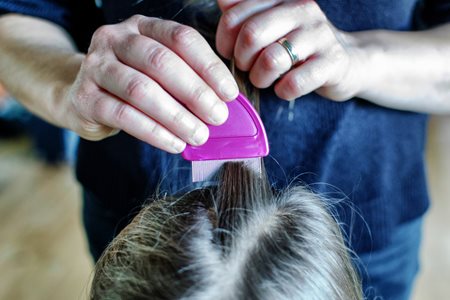Lice
Also known as: head lice, body lice, pubic lice, lice infestation.
What are lice?
There are three different kinds of lice which live in human hair of the head, pubic area or on the body. They may be few or large in number, known as an infestation. All are common in schoolchildren, highly contagious and spread through close contact, shared clothing, or shared personal items like combs or brushes.
What causes lice?
Lice infection is caused by a tiny wingless parasitic insect called a louse. Lice is the plural of louse.
What are the symptoms of lice?
Lice eggs, known as nits, look like tiny yellow or brown dots and are often confused as dandruff before they hatch. The eggs are laid by the lice on the shafts of the hair close to the scalp. After they hatch they leave their white shells firmly attached to the hair shaft. Rarely does one actually see live lice. Lice feed on blood a number of times a day and can only survive off the body for 2 days.
- Head lice may cause no symptoms at first, but over time scalp itching and scratching causes the skin to become red and may ooze fluid or become infected. Hair loss may also occur.
- Pubic lice causes severe itching and lice bites can cause small reddish marks that look like bruises on the body, thighs, and upper arm. Eyelashes may have the tiny white eggs/lice at their bases.
- Body lice causes severe itching especially at night and cause sores in the armpits, on waistline and body.

What are care options for children with lice?
Lice and nits can be removed by using a fine-toothed comb every 3-4 days for 3 weeks after the last live louse has been seen. The most common treatment is an over-the-counter or prescription shampoo, lotion or cream. If these are not effective your pediatrician may prescribe other treatments. For the itching a number of medications are available which your pediatrician will discuss with you. Great care is also required to ensure that all clothes, bedding, stuffed animals, and other items that have lice are decontaminated to prevent reinfection.
Reviewed by: Sunil U Bochare, M.D.
This page was last updated on: August 19, 2021 04:04 PM